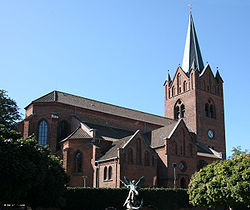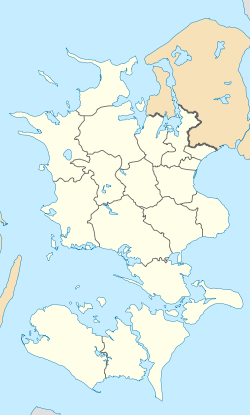Slagelse
Slagelse
City in Region Zealand, Denmark
Slagelse (Danish pronunciation: [ˈslɛːjl̩sə]) is a town on Zealand, Denmark. The town is the seat of Slagelse Municipality, and is the biggest town of the municipality. It is located 15 km east of Korsør, 16 km north-east of Skælskør, 33 km south-east of Kalundborg and 14 km west of Sorø.
You can help expand this article with text translated from the corresponding article in Danish. (January 2023) Click [show] for important translation instructions.
|




